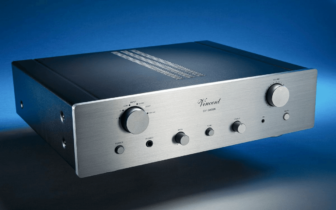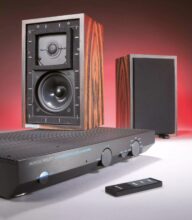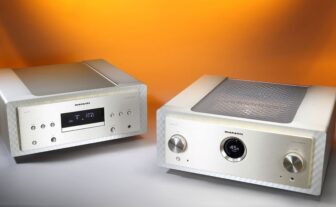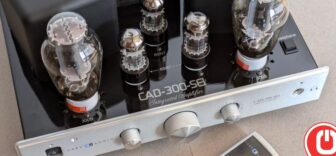Cambridge Audio CXA81 Mk II Integrated Stereo Amplifier Review
The audiophile specialist Cambridge Audio is particularly known for good sound at an affordable price. Now, they have revamped their best-selling amplifier. The CXA81 Mk II is said to have improved even further in terms of sound quality. Tested at 1,199 euros.
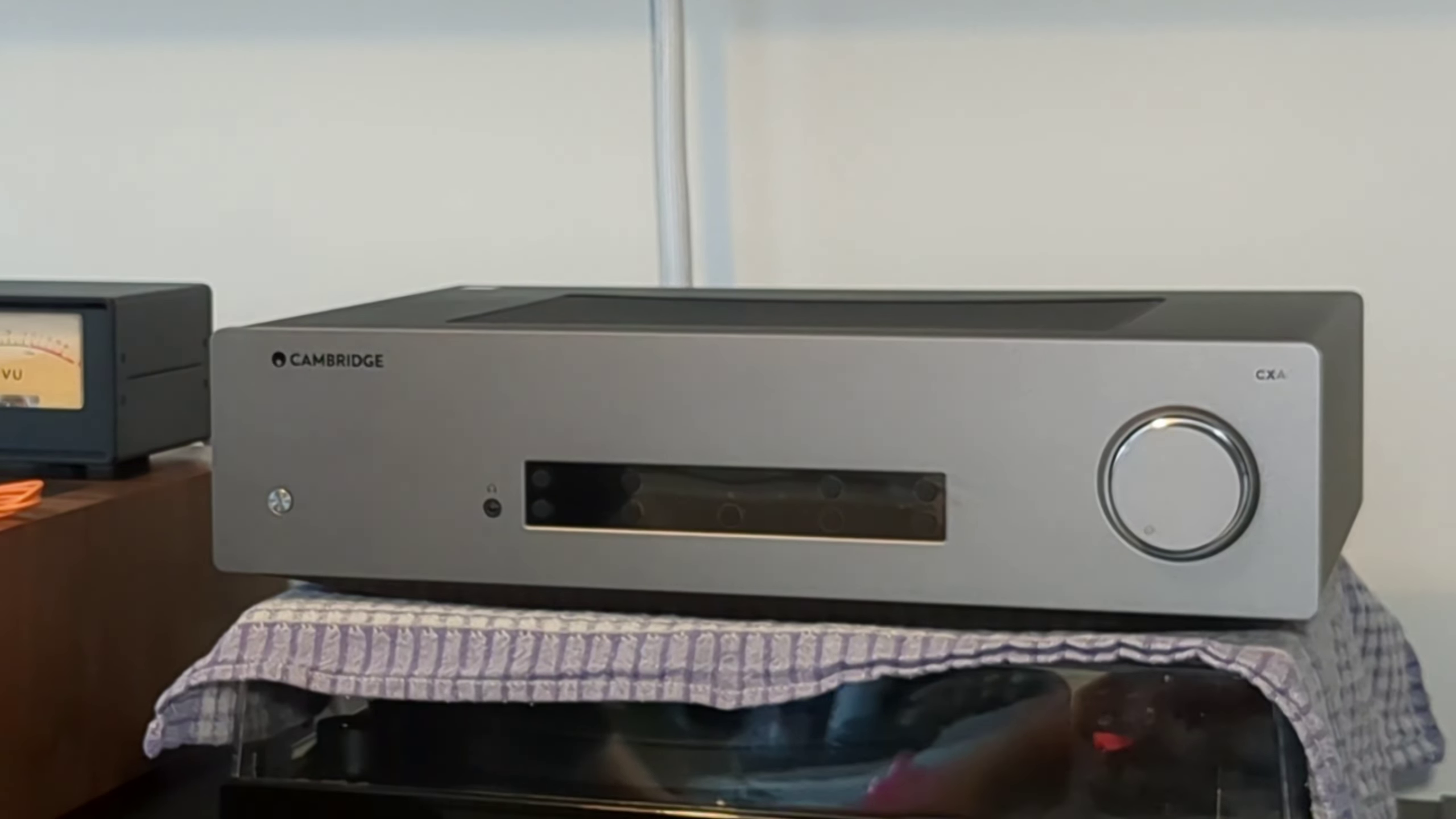
What is Cambridge Audio CXA81 Mk II?
Cambridge Audio’s tradition of amplifier design dates back to 1968, when their particularly audiophile debut was released. The lineage of immediate predecessors like the Azur 650/651 and CXA80/81 were all sales successes, naturally building upon each other’s strengths and learnings. The new Cambridge CXA81 Mk II is available exclusively in an understated, timelessly elegant silver-grey. The front panel is not symmetrically designed, as is almost common today, although the “display,” which is more of a styled control panel, is centrally positioned on the chassis.
It clearly indicates which analog or digital input and which speaker pair, i.e., which output A/B, is selected. The fairly large and haptically satisfying volume control is where you’d expect it, on the right side. On the other side of the front panel, you’ll find the headphone jack to the left of the mentioned “display,” as well as the main switch on the far left, which is not a hard power switch. The amp consumes 42 watts in idle mode, which is good. In standby mode, it’s a very economical 0.3 watts.
Naturally, the CXA81 Mk II comes with a well-designed system remote control, which can also manage other Cambridge Audio components.
Connectivity
In terms of connectivity, the British-designed and developed device offers both the unusually included balanced XLR connections for the most important source and four additional RCA/Cinch inputs for analog sources. Additionally, optical and coaxial interfaces for digital inputs, as well as Bluetooth in the high-quality aptX HD variant, are provided.
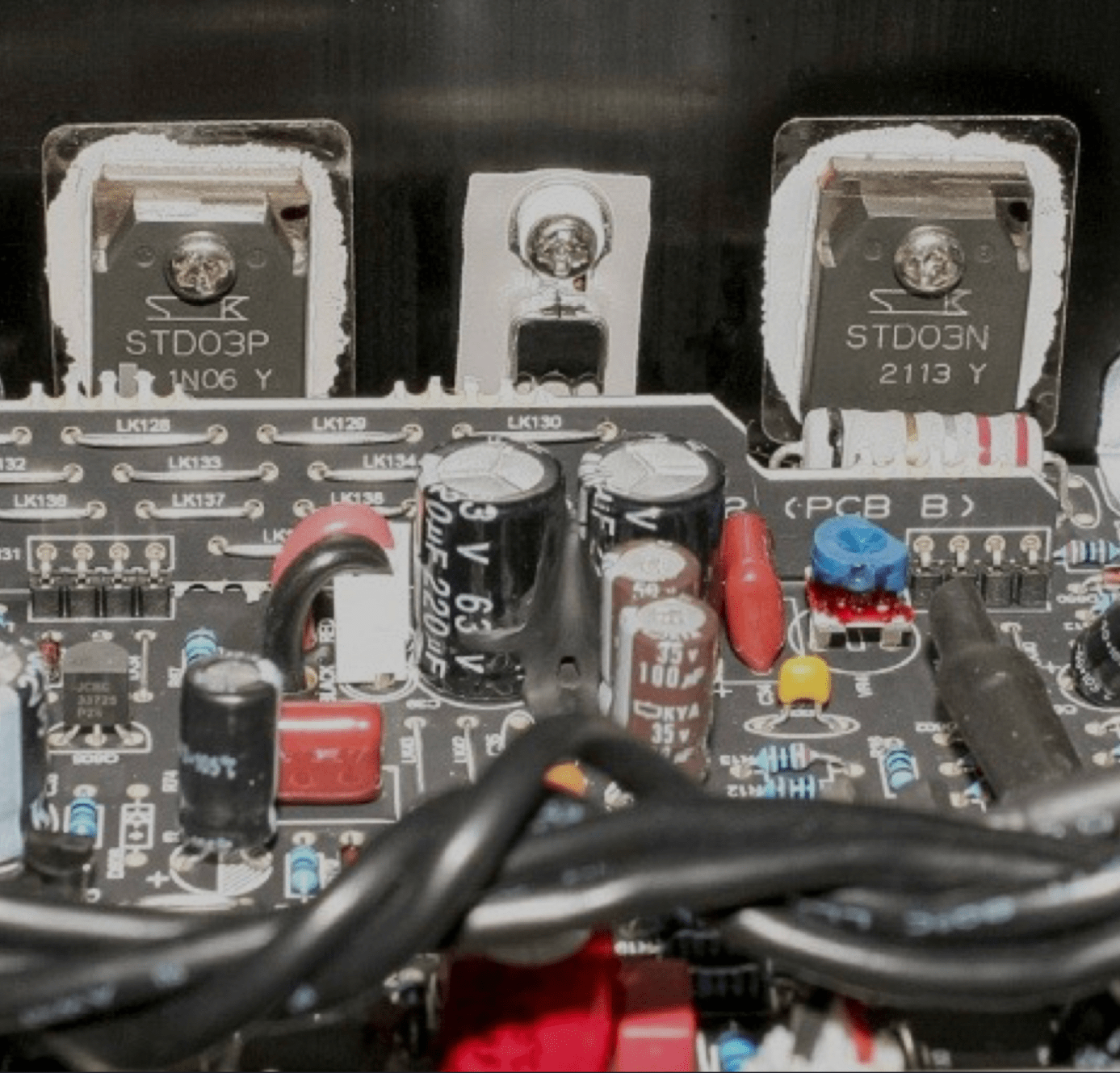
The new Cambridge CXA81 Mk II even features preamp and subwoofer outputs, which we find important. A USB connection to a PC or Mac can be made at the rear of the amplifier, effectively turning the amplifier into an external sound card.
Two pairs of speakers can be connected and switched, allowing for the operation of a second zone or bi-wiring a single pair of speakers. Almost everything seems possible: We were only slightly disappointed that the otherwise superbly equipped amp lacks an HDMI interface for TV. However, it’s not always possible to have everything—there are two Toslink optical connectors, which can usually be used to connect a TV.
Bluetooth, at least in connection with a Cambridge Audio turntable from the Alva series, also means that it is set up for vinyl playback. The integrated amplifier is naturally also designed, both externally and technically, to pair with the recently introduced CXN100 network player and the CXC CD transport from the same brand.
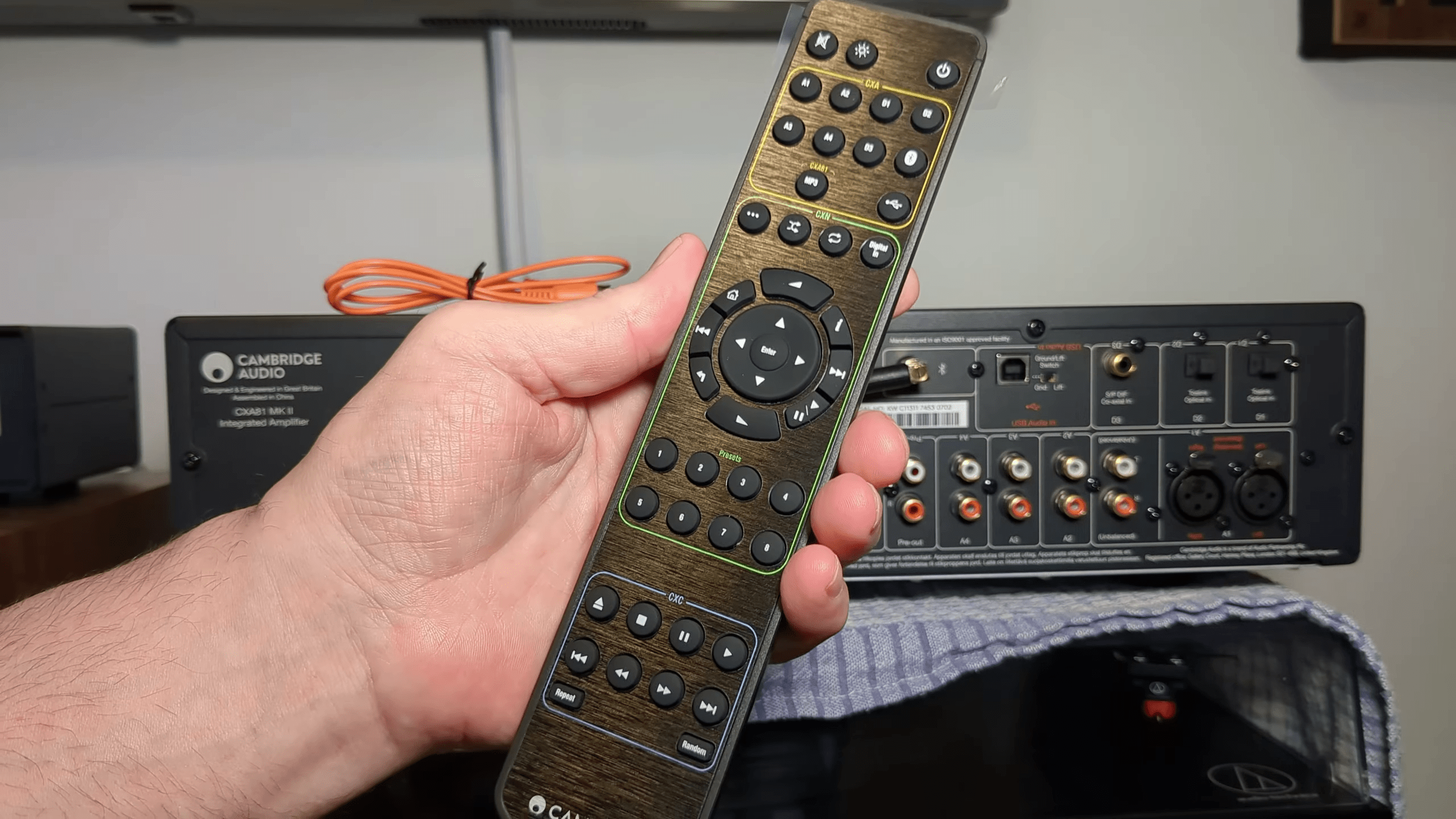
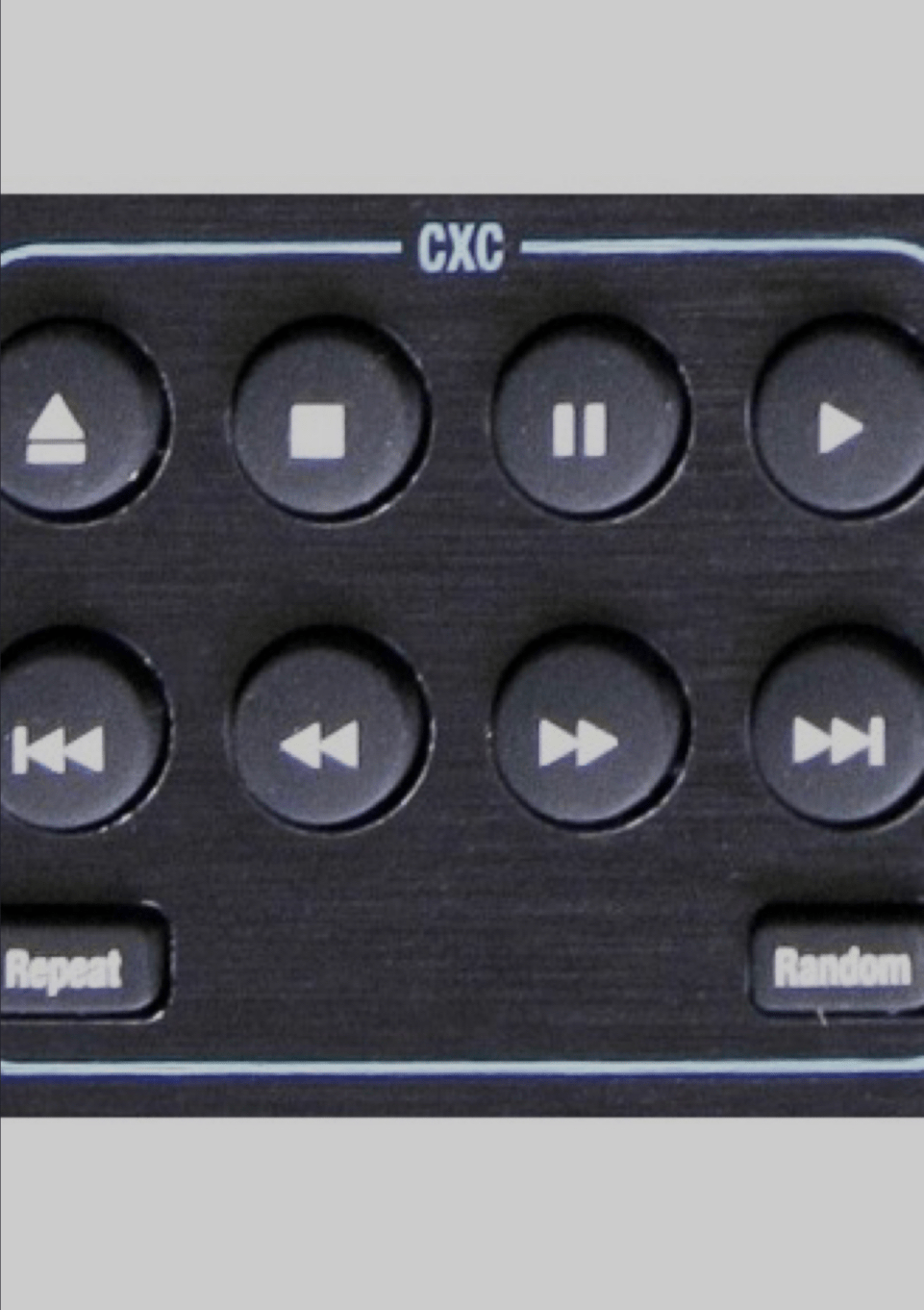
Of course, it can also be easily combined with other brands’ components, although for phono, an additional preamp—either external or built into the turntable—is naturally required. This could be seen as a downside. Not everyone wants a Bluetooth turntable.
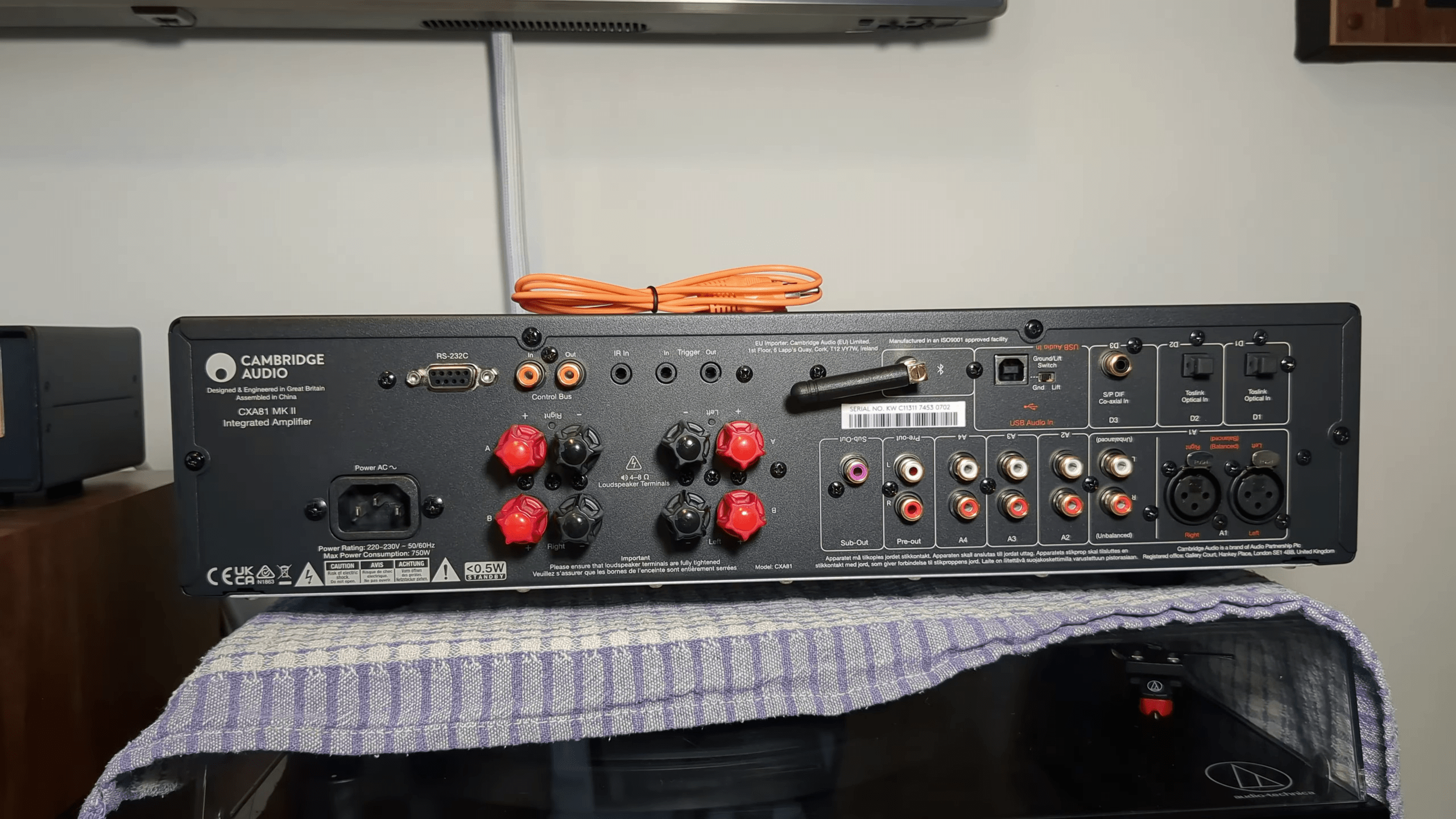
Full Power Ahead
The new, nearly nine-kilogram high-gain integrated amplifier from the Brits brings a solid 2x 80 watts of output power to fulfill its duties, thanks to the equally high-quality and classic Class AB setup on paper. Lab tests showed 82 watts at 8 ohms and just under 120 watts at 4 ohms load.
For short-term peak impulses, the Cambridge can even pump an impressive 150 watts per channel into the speaker wires. This should be more than sufficient in most cases and, alongside a high damping factor and great bandwidth or “speed,” is a key reason why this amp performs so authoritatively.
Cambridge Audio offers the significantly more elaborate Class G amplifier, which adjusts the bias around the signal’s zero-crossing point, in higher-priced models as an evolution of Class AB.
Under the hood, we find a quite generous, likely oversized linear power supply with a low-stray-field toroidal transformer, channel-separated power supply, and good filtering capacity, along with bipolar power transistors on heatsinks.
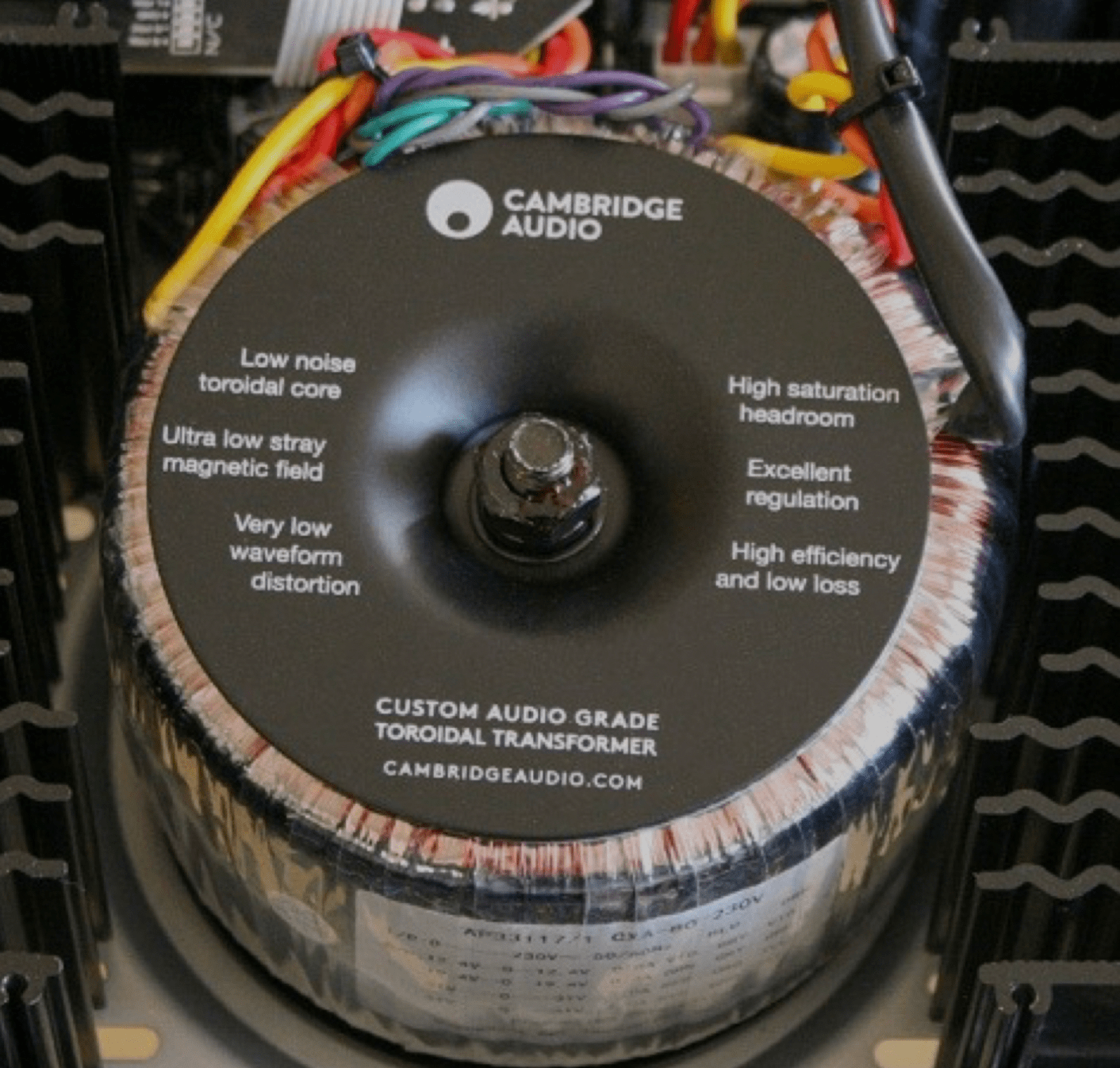
According to the manufacturer, several minor changes have been made at the component level compared to the previous model. To further develop or optimize the sound, new capacitors and operational amplifiers have been integrated into the circuit. According to Cambridge Audio’s Chief Developer Nick Brown, this required no less than five different prototypes, which were repeatedly compared against each other and the predecessor CXA81 in intensive listening sessions.
The aim was not to change the obviously successful sonic signature of the CXA81 significantly but to improve it further.
New Audiophile Digital Processing
The biggest development, however, is likely the inclusion of the even higher-quality 32-bit digital-to-analog converter (DAC) ES9018K2M from ESS Technology, which replaces the already good ES9016. This is one of the most advanced two-channel DAC chips from the manufacturer, with channel-separated conversion and an extremely high signal-to-noise ratio or dynamic range. The data sheet indicates 127 decibels for this chip. This DAC is also used in much more expensive high-end devices, even reaching the reference class, and is renowned for its, not least, sound capabilities.
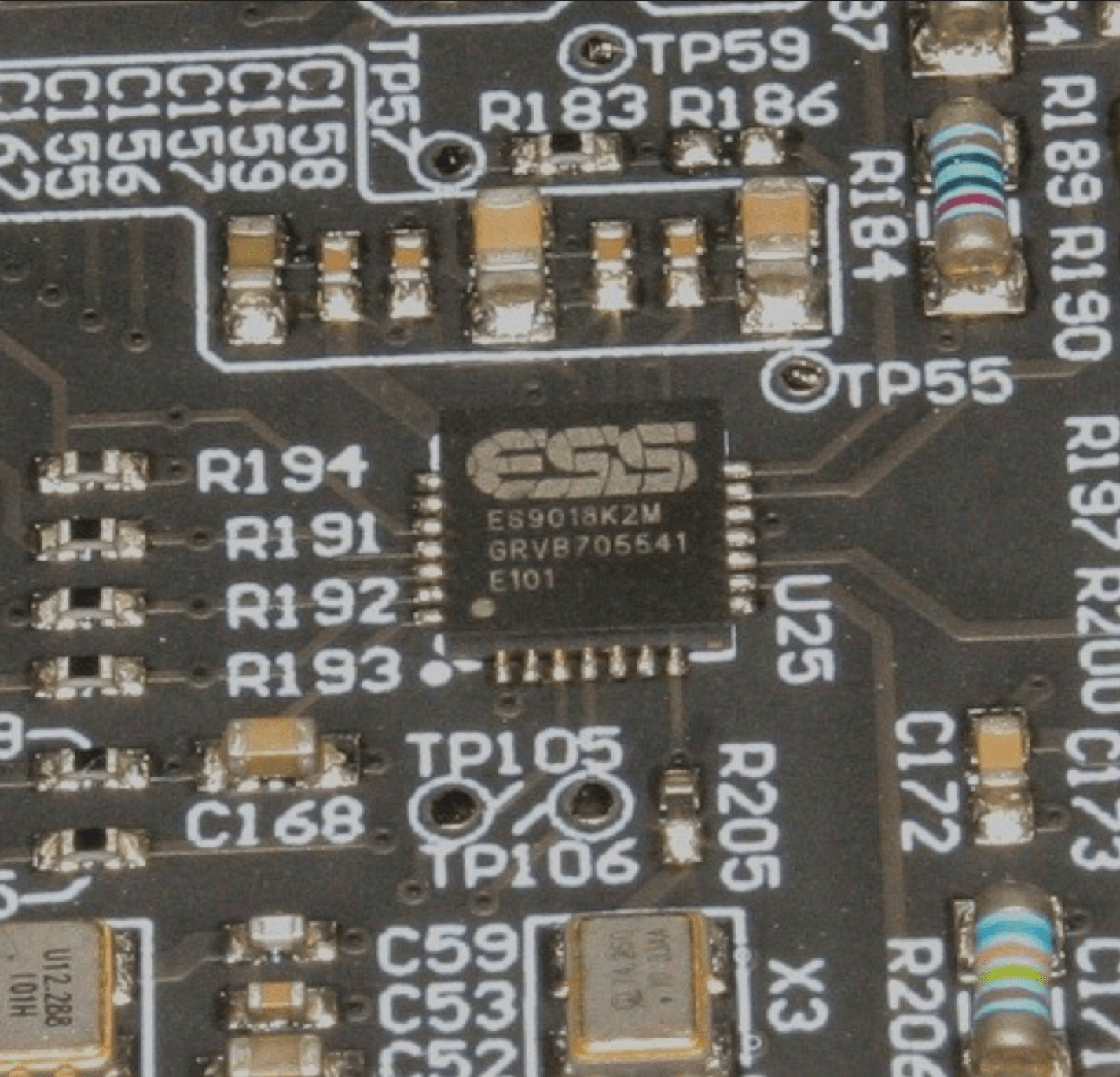
Chip Tuning
With the superb ESS chip comes the tempting possibility of saving an older, but perhaps mechanically excellent CD player from the scrap heap by upgrading its DAC capabilities through a digital connection to the Cambridge. This is definitely not to be overlooked, as the greatest advances in recent decades have often been in DACs and their resolution, while CD transports have sometimes been simplified. A DVD player can also benefit from the ESS chip, as long as it is operated in stereo mode. It is often forgotten that a top chip like this, which currently costs around 11 euros each, alone is of little use because its qualities can only be realized in the right circuit environment. However, this is something you don’t need to worry about with Cambridge Audio. And indeed, this new integrated amplifier from the UK doesn’t disappoint in the 7Review listening room—quite the opposite.
From the very first notes, it makes it clear with a large, spacious soundstage and an unexpected wealth of detail that it performs like a “big one” and takes control of all connected speakers with authority.
Donald Fagen’s “I.V.Y.” flows lightly, finely detailed, and three-dimensional from the speakers, while the dynamic explosion in Chuck Mangione’s “Children of Sanchez” leaves no one sitting calmly in their chair. Instead, it brings a delighted grin, toe-tapping, and possibly even goosebumps. Even cherished “clichés” are truly fulfilled. The emotionally engaging Brit pleases us greatly. The “goosebumps” are even reproducible.
Superb Sound for the Money
Its presentation is fast, powerful, and vivid, with surprisingly ample breath and space around each event. It sounds effortless. There are already high-end undertones here, to put it cautiously. Its rhythmically lively and, above all, cohesive timing, along with the reproduction of fine details and pronounced depth, is significantly above what is typically offered for around 1,000 euros. This is already very, very good, without a doubt. With and around this amplifier, using suitable speakers, whether compact on stands or “upright and grounded,” you can build a very fine and fortunately affordable audio system that offers plenty of class and “infectious” listening pleasure.
This is always a great thing with such components because if an investment like this leads to frequent, pleasurable, and especially enjoyable music listening, which pays off literally for years, then everyone has done something right. The risk of such a system becoming abandoned due to disinterest is almost zero. Even the dedicated high-ender might give this amplifier a chance when equipping a holiday home, office, party basement, youth room, or guest room with a secondary system. He will regularly enjoy it.
Saving Isn’t Always Best
However, if you want or need to spend even less money, you can, of course, look at the good and successful predecessor model and be happy with that too. Or the Arcam Radia A5, which also delivers audiophile sound for under 1,000 euros.
However, with a budget of 1,200 euros, we strongly recommend the new amp tested here, which demonstrably shows that it can do everything just a little better, making it a real bargain for music lovers. What the new Cambridge brings is a not quite self-evident, holistic quality that can simply be called “engaging musicality.” And with that, it earns a clear recommendation from the editorial team.
The few green bills will quickly pay off, believe us. For the “small” class around 1,000 euros, there are now at least two clear, current recommendations with the Arcam Radia A5 and, especially, this Cambridge CXA81 Mk II.
The integrated amplifier Cambridge Audio CXA81 Mk II has been available since May 2024 for a price of 1,199 euros. As an audiophile all-round package, it would be worth its price even if it were a bit more expensive.
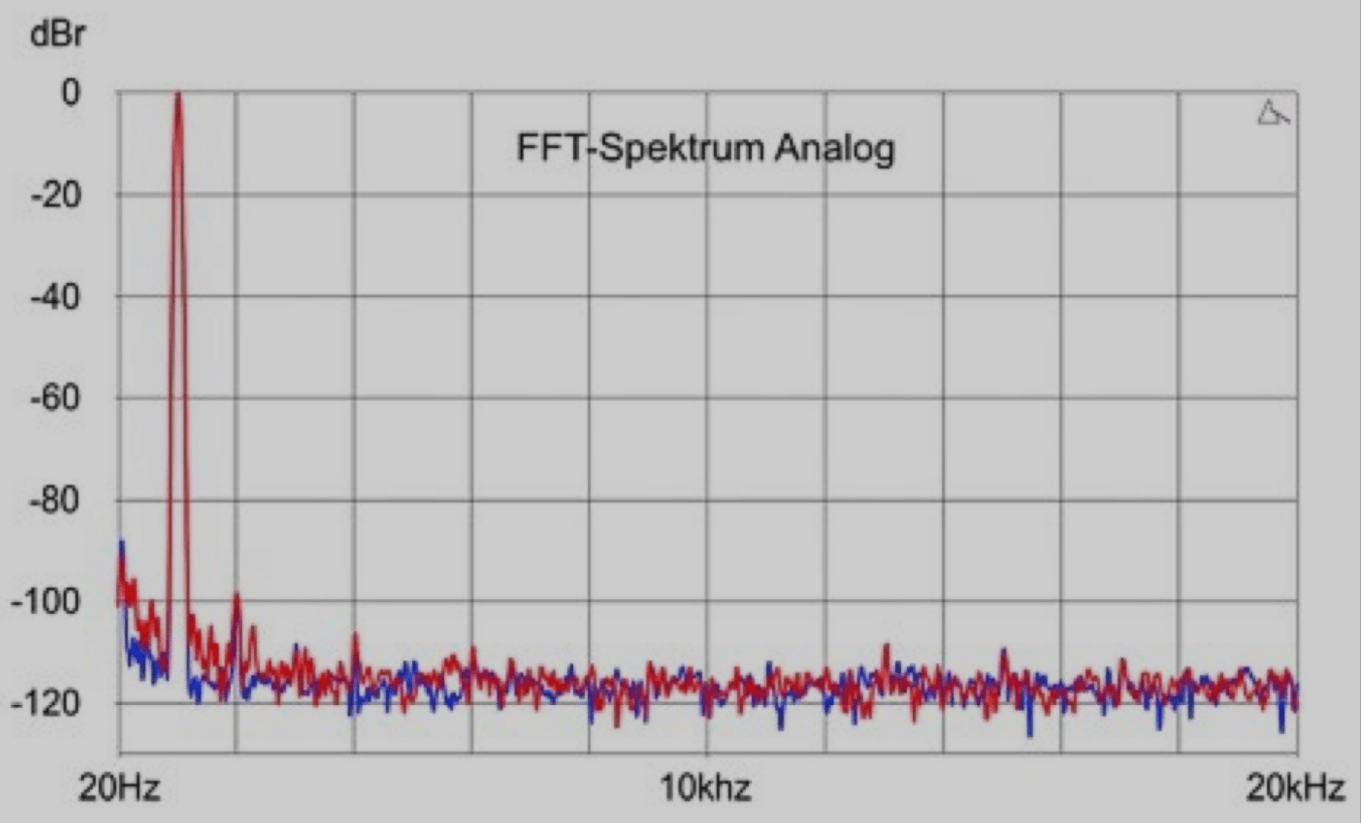
TEST EQUIPMENT
CD Players: Audiolab 8300CDQ, Cayin Mini-CD Mk2, Cyrus dAD3 Q24
Streamer: Audiolab 6000N Play, Wiim Plus
Integrated Amplifiers: Arcam Radia A5, Musical Fidelity M3SI
Speakers: Canton Reference 9, DALI Epicon 6
Cables: Audioquest, Silent Wire, Supra
WE LISTENED TO THIS
SUPERTRAMP: CRIME OF THE CENTURY
The masterpiece of the supergroup never ages.
C. MANGIONE: CHILDREN OF SANCHEZ
Incredibly dynamic brass and drum attacks.
Specifications
Product Type
Integrated Amplifier without Streaming
Website:
www.cambridgeaudio.com
Dimensions (W x H x D) in cm / Weight in kg:
43 x 11.5 x 34 / 8.7
Germany Distributor / Contact Phone Number:
Cambridge Audio / +49 4101 809 9810
SOUND: 55% – Very Good (1.5)
- Sound Quality: Clear, colorful, spacious, authoritative, musical
MEASUREMENTS: 10% – Good (1.7)
- Continuous Power per Channel at 4 Ohms with 1% Distortion (in Watts): Good (119)
- Impulse Power at 4 Ohms (1 kHz; in Watts): Good (149)
- Intermodulation at 5 Watts (in Percent): Very Good (0.0013)
- Damping Factor at 4 Ohms: Good (43)
- Channel Separation (in Decibels): Satisfactory (60)
- Volume Control Balance (in Decibels): Satisfactory (0.77)
- Upper Cut-off Frequency (in kHz): Very Good (>80)
- Distortion Factor at 5 Watts (in Percent): Very Good (0.0032)
- Signal-to-Noise Ratio at 5 Watts (in Decibels): Very Good (-96)
- Frequency Spectrum: Very Good
FEATURES: 15% – Satisfactory (2.7)
- Build Quality / Finish: Good
- Number of Analog Inputs (RCA/XLR): Very Good (5)
- Special Interfaces / Pre-Out: BT, DAC, Headphone, Sub / Yes
- Tone Control or Room Calibration: No
- Color Variants / Finishes: Satisfactory (gray)
HANDLING & OPERATION: 15% – Good (2.3)
- Remote Control Quality / Manual: Good / Good
- Operation on Device / Display & Indicators: Good
SERVICE & ENVIRONMENT: 5% – Sufficient (3.9)
- Warranty in Years: Satisfactory (2)
- Packaging: Satisfactory (Cardboard/Plastic)
- Power Consumption in Standby / Idle (in Watts): Very Good (0.3 / 42)
- Hard Power Switch / Expandable Functionality: No / No
TEST RESULT: Good (1.9)
Verdict
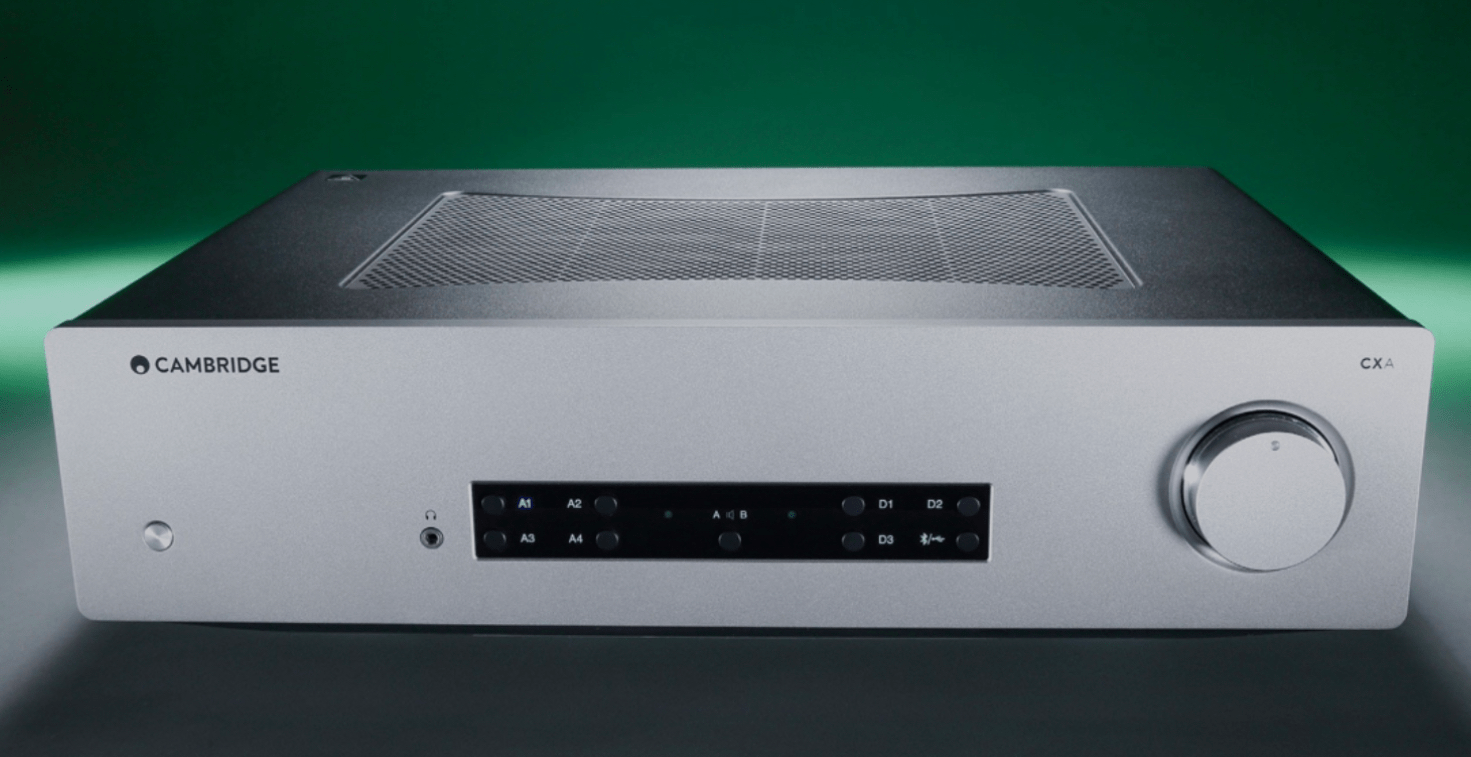
When you purchase through links on our site, I may earn an affiliate commission. Here’s how it works.







